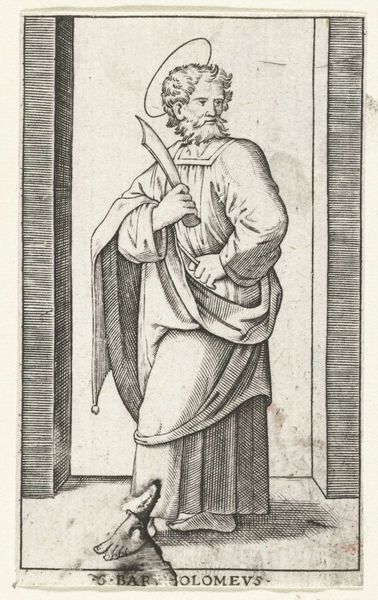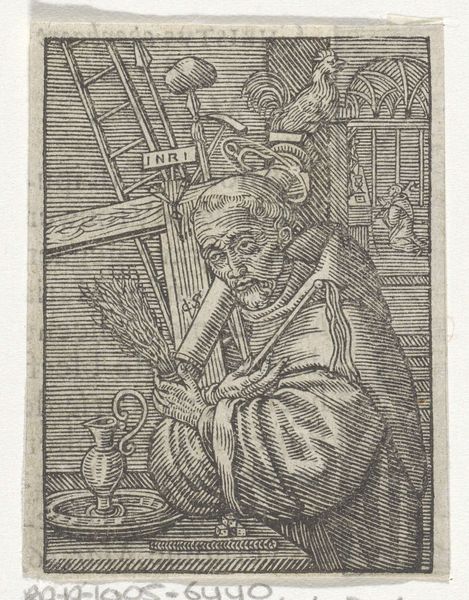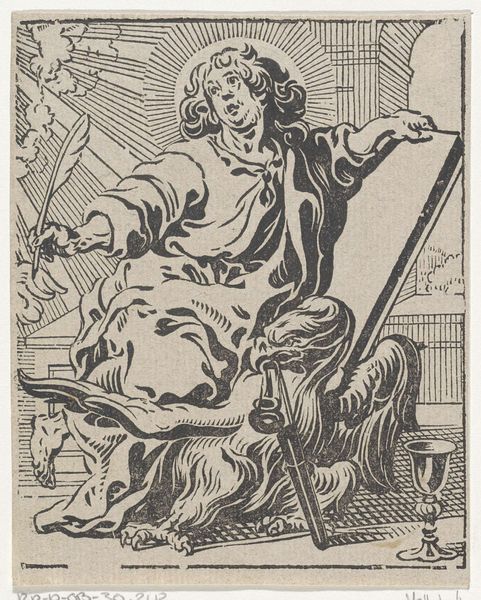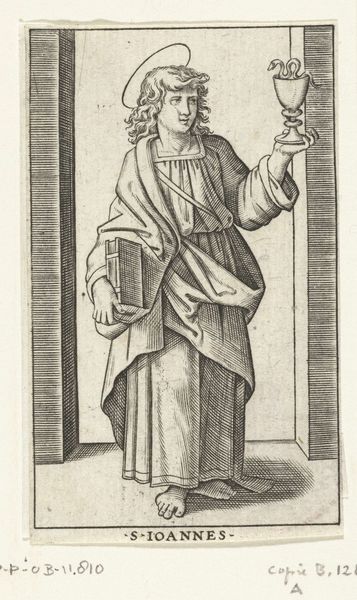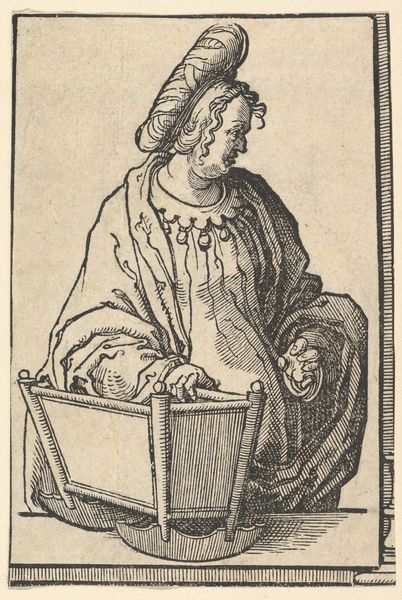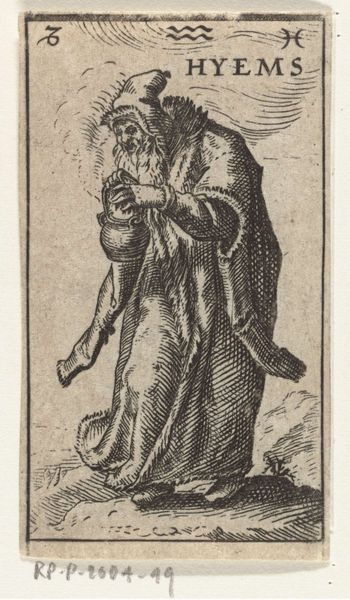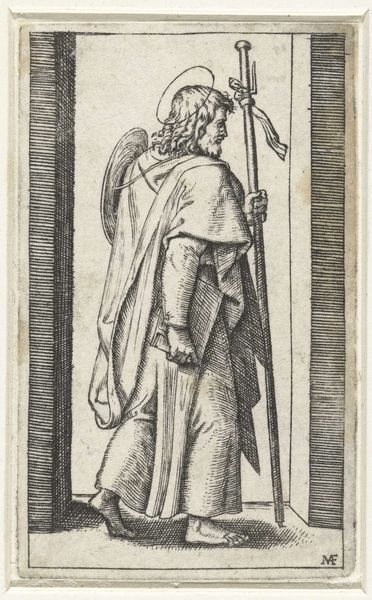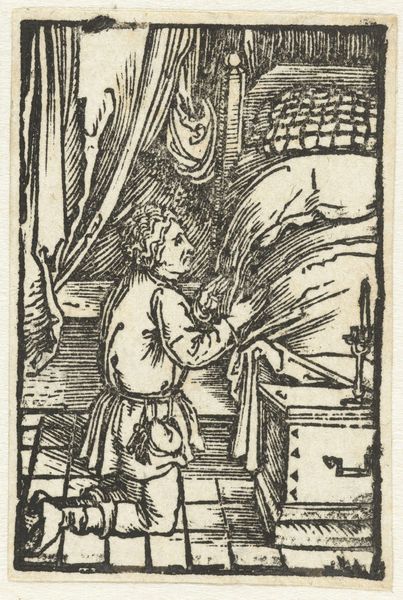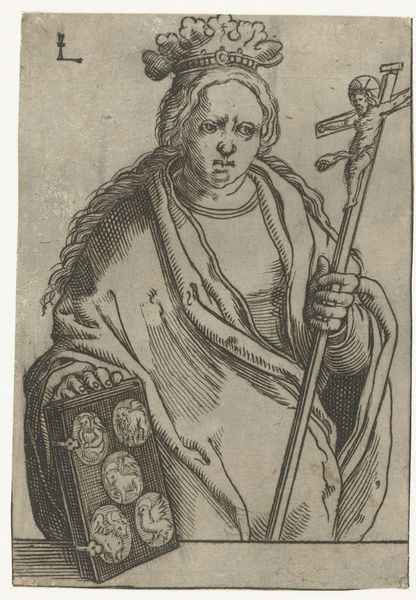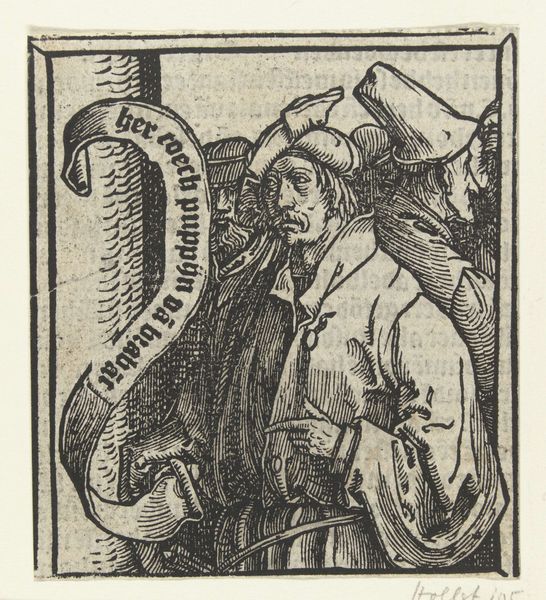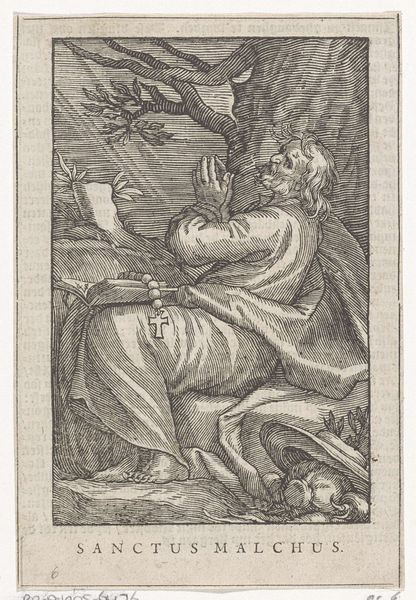
graphic-art, print, engraving
#
portrait
#
graphic-art
# print
#
figuration
#
linocut print
#
line
#
northern-renaissance
#
engraving
Dimensions: height 141 mm, width 112 mm
Copyright: Rijks Museum: Open Domain
Editor: This is Antoine Sallaert’s "Johannes de evangelist," dating from sometime between 1590 and 1650. It’s a print, an engraving. I’m struck by how graphic it is, the use of such bold lines. What can you tell me about it? Curator: Well, let’s think about the production of prints like this one. This engraving demonstrates the development of a print market aimed at broader consumption. Before, art was largely the domain of the wealthy or the Church. Editor: So prints made art more accessible? Curator: Precisely. Consider the labor involved: the engraver, the printer, the distributors. They all played a role in disseminating images and ideas. Religious images, like this portrayal of Saint John, could reach wider audiences and inform their understanding of scripture. Look at the chalice, and the eagle–are those materials important to the content as well as to the craft? Editor: They are symbols of Saint John. He reputedly survived a poisoning attempt using a chalice. Curator: Exactly! This wasn't just about artistry, it was about propagating religious narratives through readily reproducible materials. And notice the stark line work—consider the cost-effectiveness compared to color illustrations. Editor: That's fascinating, looking at it not just as art, but as a commodity, almost. It gives you a whole new appreciation for what it meant at the time. Curator: And also how such cultural forces were evolving. Hopefully this helps us look more thoughtfully about how images and meaning circulate.
Comments
No comments
Be the first to comment and join the conversation on the ultimate creative platform.
